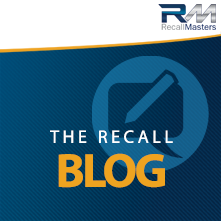Who’s the Baby? Recalls and Infants
Who’s the Baby? Recalls and Infants
A Blog Post by Dan Beres, Managing Partner & Chief Operations Officer
When people think of recalls, at least in our industry, most think about vehicles. For many consumers, merely contemplating spending their time at a dealership waiting for a recall to be repaired or losing the use of their car for some time, seems draining and inconvenient. But most consumers probably don’t consider the potential risks recalls can pose to their families.
A recent article in Consumer Reports reviews recalls related to child-safety seats and sleeping infants. While the report focused on the seats, it did mention proper installation. That installation typically involves the LATCH safety system installed by car manufacturers, which anchors the child safety seat to the vehicle’s frame.
I’m willing to bet that upon hearing the news of a child safety seat recall, most parents would rush to the closest retailer to exchange it for a safe one. Would that be inconvenient? Absolutely. But they would do it because parental instinct and family preservation are engrained in our DNA.
However, consider the consumer reaction should a vehicle’s LATCH system have a recall. While the consumer may have the safest car seat in the market, without a properly operating anchor, the infant’s life safety is at risk. But would parents rush to their local car dealership to get that defective anchor repaired? My guess is that they would not. Is an anchor system explicitly designed to hold in and secure a child seat, even something that could be recalled? Absolutely! In 2018, Cadillac CT6 sedans were recalled for issues with the LATCH system, which made it harder to install a car seat correctly. Also, in 2018, 55,000 Volkswagen Atlas models were recalled for a design flaw with their LATCH system, which couldn’t accommodate wider car seat bases. In 2016, almost 200,000 BMW X3s and X4s were recalled because the anchors could break while in use.
The point I am trying to get across here is that, no matter what the recall is, an unsafe vehicle is unsafe for everyone inside. It does, however, hit much closer to home and make it more real when a baby’s life is in danger.
Being more specific about the recall itself helps to create emotions that cause consumers to act. Generalities don’t always motivate people, but start talking about injury to their child? Now they’re listening.
How does all this apply to recalls in general?
Many dealerships do their best to reach out to and inform consumers in their PMA of any existing recalls, as do manufacturers. The problem is that far too often, these messages don’t get read because they are trashed or go into a spam folder. Our industry needs to deliver impactful messages to make an impact on recall completion rates,
My point is that consumers not only NEED to know about existing recalls, but they sincerely WANT to, as long as they understand the impending dangers. It’s easier to track down existing customers, but that second or third-generation vehicle owner is much more elusive. There are ways, of course. But sometimes it may seem too much of a project for a dealership to tackle due to costs and the investment of time.
However, spending the time and effort to track down same-make vehicle owners in your PMA, designing professional communications that relay WHY the recall needs to be repaired, and utilizing multiple channels of communications to reach them makes a huge difference. You stand a good chance of reaching these consumers and increasing service revenue through recall work and other services that may be discovered during the initial inspection. And you can develop a loyal and robust base of NEW service customers in your area.
It’s hard to imagine a mother (or father) being upset if a dealership were to tell them that the LATCH system on their vehicle could be faulty and could endanger a child, BUT they can quickly fix it at the dealership right now. I think the response would be quite the opposite — one of gratitude. And I guarantee that they won’t find your service department or communications “inconvenient.”
About the Author


